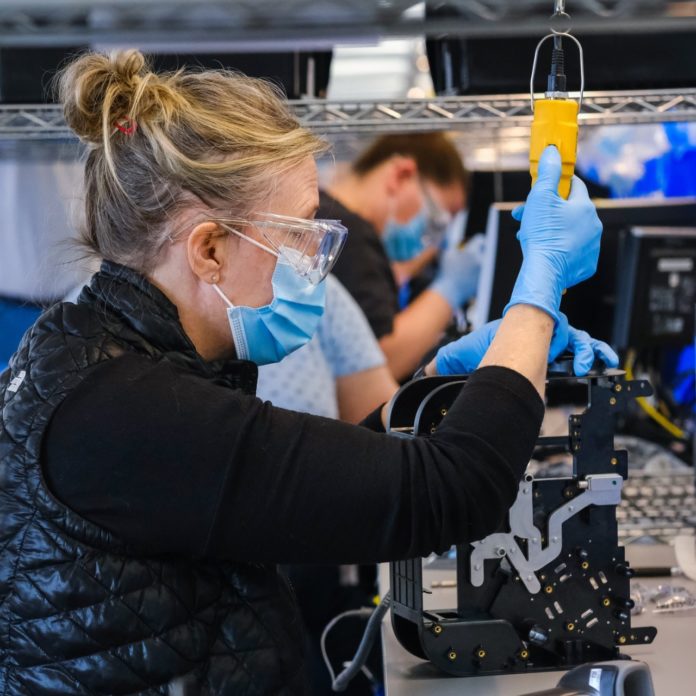
Since last year, a fleet of 17 Stratasys FDM® 3D printers is currently being leveraged for tooling production at General Motors.
General Motors aka GM continues to focus on production opportunities where they can provide a business value and this means leveraging additive manufacturing where they “should”. With that in mind, the car manufacturer has added 17 Stratasys FDM® 3D printers to its production capacity.
As an early adopter of AM technologies, the company believes 3D printing enables them to meet the challenges raised by modern industry and business uncertainty; and ultimately helps them to become more nimble as a company.
“We’ve been on this journey for more than 30 years, but 3D printing is becoming even more widespread at our company, with more than 700 employees now trained to use the technology. Additive manufacturing is consistently providing us more rapid and efficient product development, tooling and assembly aids, with even more benefits to come”, said GM’s director of additive manufacturing, Ron Daul.
An April 2020 study by SME Media* found that 25 percent of U.S. manufacturing professionals were planning to change their supply chains in response to the pandemic, and 3D printing was the top choice (with robotics) of 11 manufacturing technologies for post-COVID investment.
Despite the competitive advantage GM holds, the car maker is not looking to print all the 30 000 parts that a vehicle contains but to leverage the technology where and when it is applicable. For instance, 75 percent of the parts in the prototype of its 2020 Chevrolet Corvette were 3D-printed.
Right now, with the addition of Stratasys FDM technology, the focus will be on heavy parts that are usually produced via metal AM. The key to make it happen will be to wisely select the 3D printing materials and make sure the 3D printers allow for a certain repeatability. As far as materials are concerned, one of the ideal candidates for such type of production is Nylon12 Carbon Fiber, a composite material containing 35 percent chopped carbon fiber by weight, which translates to an exceptionally high strength-to-weight ratio, even in places subjected to heavy vibrations.
“GM is making the smart investments in 3D printing to succeed in this new normal of uncertainty and disruption,” said Stratasys Americas President Rich Garrity. “As a result, GM has manufacturing lines that are more adaptable and less expensive, and products that are developed faster and better. They are a clear model for the future of additive manufacturing in the automotive industry.”
Remember, you can post AM job opportunities for free on 3D ADEPT Media or look for a job via our job board. Make sure to follow us on our social networks and subscribe to our weekly newsletter: Facebook, Twitter, LinkedIn & Instagram! If you want to be featured in the next issue of our digital magazine or if you hear a story that needs to be heard, make sure to send it to contact@3dadept.com





